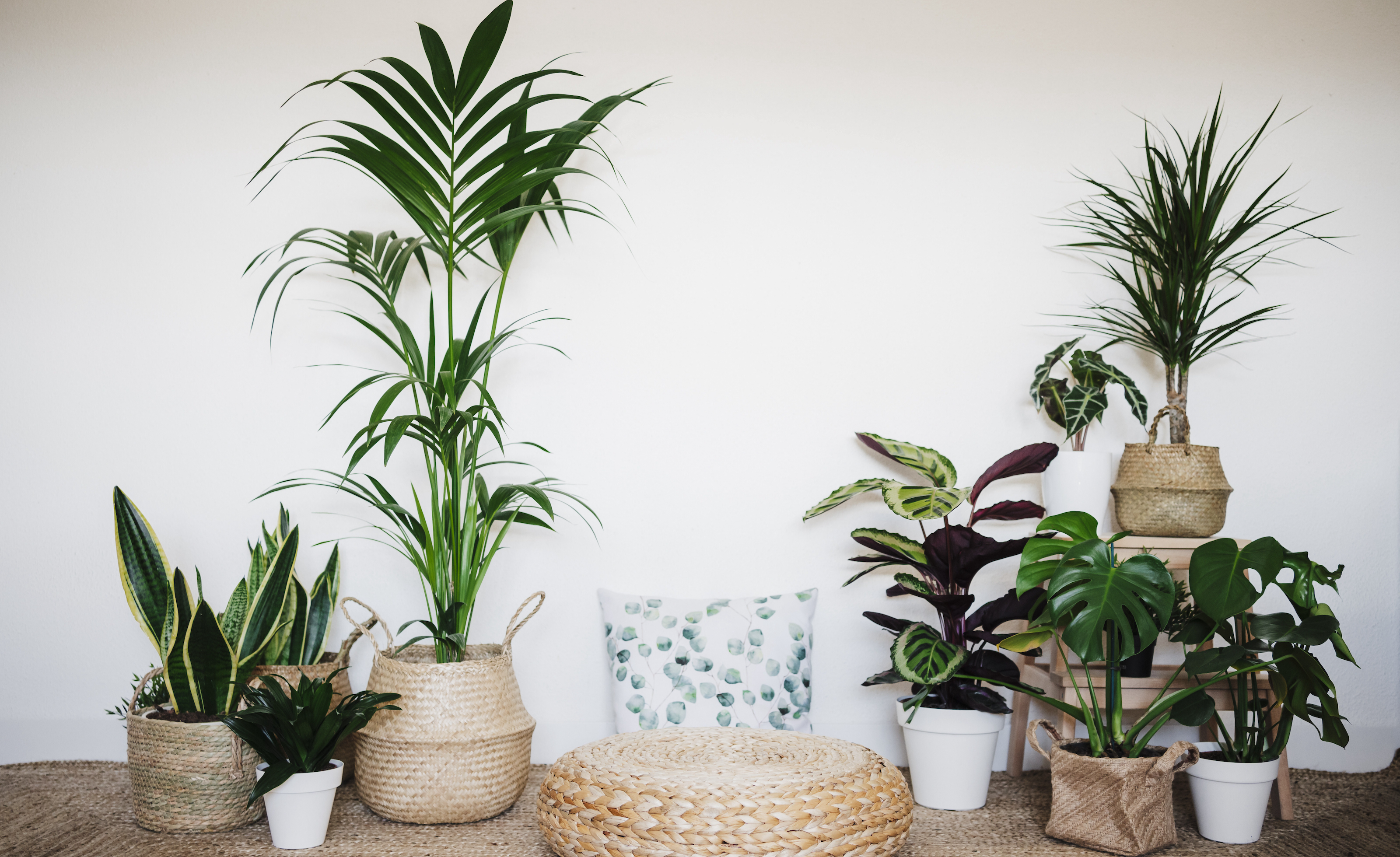
Many of us love the idea of an indoor garden but just don't have the time to tend to plants properly. If you fall into this camp, or have left a trail of plant destruction behind you, there is good news. Low maintenance plants exist. And you - yes you - can look after them.
Because the idea of keeping anything alive can be overwhelming, we've asked our experts to select 10 low effort plants for your indoor garden.
'Low maintenance plants are popular with plant parents that want to enjoy greenery without it requiring a lot of time and attention to keep them alive,' says Paris Lalicata, plant expert at The Sill.
'Generally, what makes a plant low maintenance is how versatile it can be with varying light levels. Most low maintenance plants can tolerate lower light conditions but will thrive well in bright light. Another reason that can make plants low maintenance is their watering frequency and their ability to be drought tolerant.'
10 low maintenance plants for indoor gardening
These hardy horticultural heroes don't require their owners to have green-thumbs or good memories - and they can handle a little plant neglect here and there
1. Sansevieria (Snake plant)
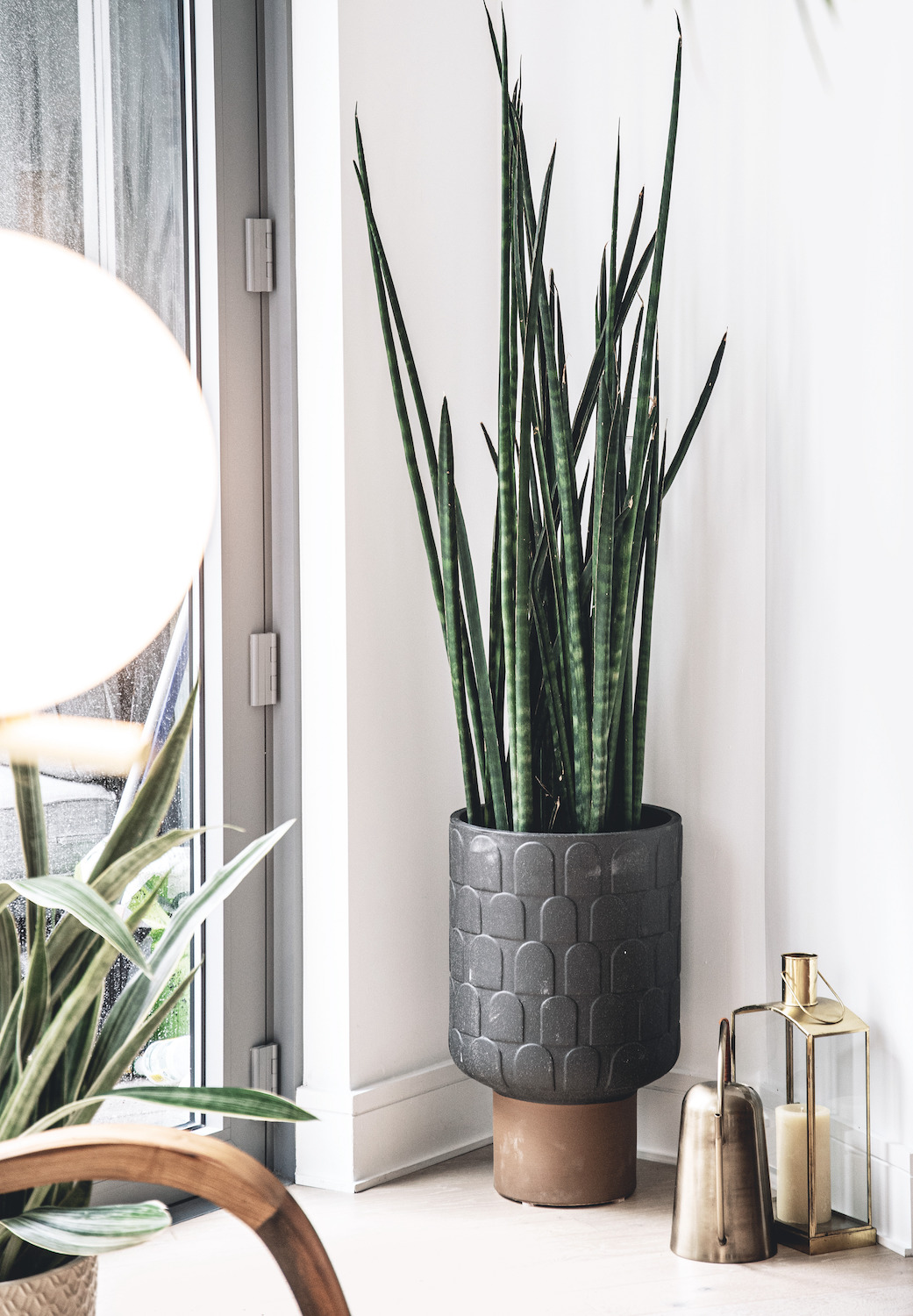
Snake Plant, also known as Mother-in-Law's Tongue, is a popular choice for its hardiness and unique, sword-like leaves. Its ability to withstand a wide range of conditions, such as low light and infrequent watering, makes it an excellent option for beginners or those with busy schedules.
'Sansevieria require very infrequent watering, especially in the winter, because they are native to the arid deserts of West Africa,' says Lindsay Pangborn plant expert at Bloomscape. 'This drought-tolerance makes them perfect for the forgetful plant keeper.'
'In fact, overwatering can cause the plant to rot; it is important to allow the soil to dry in between waterings to prevent this. Another tip is to keep the leaves dry when watering and direct the water around the edge of the pot avoiding the center of the leaves.'
Although advice is usually to keep plants out of the bedroom, as they remove oxygen at night and release carbon dioxide. The Snake plant doesn't photosynthesise this way. It releases oxygen at night and so is good for bedrooms. They're also good for how to turn your windowsill into an indoor garden - they take up little space and like the light.
'Snake Plants are known for their air-purifying qualities, making them a beneficial addition to any space,' says Nick Sandford, founder, Leaf & Clay. 'They require minimal maintenance, just watering every 2-3 weeks and placing them in an area with low to bright indirect light.'
'This succulent-like plant is notorious for “thriving off neglect”,' says Paris Lalicata at The Sill. 'You can place Snake plants virtually anywhere and forget to water them and they will survive. The easiest way to kill this plant is to over care for it.'
2. Monstera deliciosa (Swiss cheese plant)
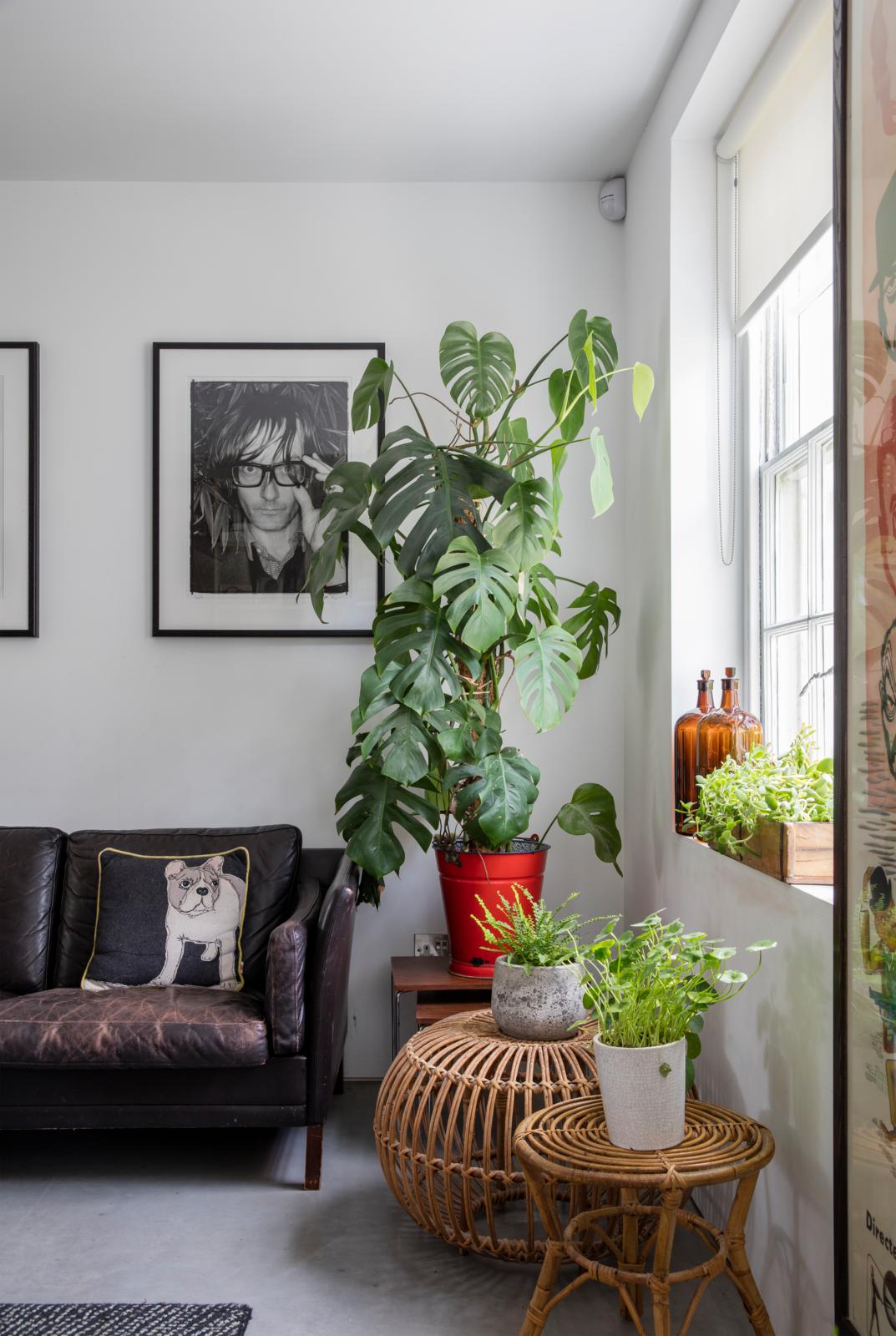
Popular in the 70s, the Swiss cheese plant has seen a return to favour in many a stylish home. When it come to what plants are best for a lush indoor garden this is always top of the list. With its distinctive perforated leaves, they require minimal attention. Monstera plant care is easy.
'Monsteras tend to thrive in most indoor environments, especially with the support of a moss pole to direct its growth upwards,' says Lindsay Pangborn, plant expert at Bloomscape.
'They can grow very large and beautiful, becoming a focal point in a home. The Monstera will grow faster and become more dramatic in a bright spot, but will grow in just about any indoor environment.
'To care for this plant, regular leaf dusting allows the leaves to absorb as much light as possible. Water your Monstera when the soil volume is almost dry and make sure to allow excess water to drain out through the drainage hole at the bottom of the pot, continues Lindsay.'
3. Baby rubber plant

Sometimes referred to as a baby rubber plant, Peperomia obtusifolia is an easy-going houseplant characterized by its thick, succulent-like green leaves. It's bushier than its namesake, grows slowly to around 12 inches and can handle shady spots.
There are numerous types of Peperomia too; some with mottled or striped fleshy leaves with tinges of grey, yellow or pink amongst the green. Originally a forest floor dweller, most varieties of Peperomia can cope without huge amounts of natural light or watering.
'Peperomia doesn’t need much to thrive,' says Paris Lalicata, The Sill's plant expert. 'It's one of our favorite low maintenance plants because it's versatile, can tolerate low light and doesn't need to be watered frequently.'
When it comes to how often you should water houseplants this is a dream. 'Plants like this usually require watering only every 7-10 days depending on their environmental conditions, and some can even go longer without water depending on your schedule,' continues Paris.
4. Dragon tree (Dracaena marginata)

The Dracaena marginata or Dragon tree is loved for its elegant cascading foliage and versatility. This plant can cope if you forget to water it now and then, so doesn't require too much from you. It does prefer distilled or rain water though. However, if that's a step too far, it will do better with filtered water rather than straight from the faucet.
With the right conditions and a monthly water, Dracaena marginata will fill your home with lush greenery, being one of the easiest and best trees to grow in pots.
'The Dragon tree is a fantastic house plant due to its eye-catching, exotic look while still being tolerant of a wide range of conditions,' says Matt Slaymaker , horticultural expert at Lively Root. 'Dragon trees are also often available in a range of sizes so are perfect as desk plants or large specimens to bring life to a room.
'They thrive best in bright indirect light. Rooms with natural light and east-facing windows are best. This plant is drought tolerant, meaning it can survive without water for some time.
'It's best is to wait until the top half of the soil is dry to water again, being careful not to water too often. They will self-shed their leaves to keep their branches clean, so you don't have to do much other than collect the fallen leaves.'
'When styling the home of a plant novice, it helps to choose plants that are on the low-maintenance side,' says Hilton Carter, plant expert and author or Living Wild.
'In one of my projects, I went with a 9-ft tall Dracaena marginata, because I wanted it to fill the space around and above some chairs. What I love most about this plant is the way its growth resembles fireworks. The upright branches remind me of the trails of smoke that shoot up into the sky, while its elegant, long thin leaves are the explosion of light.'
5. Peace lily (Spathiphyllum)
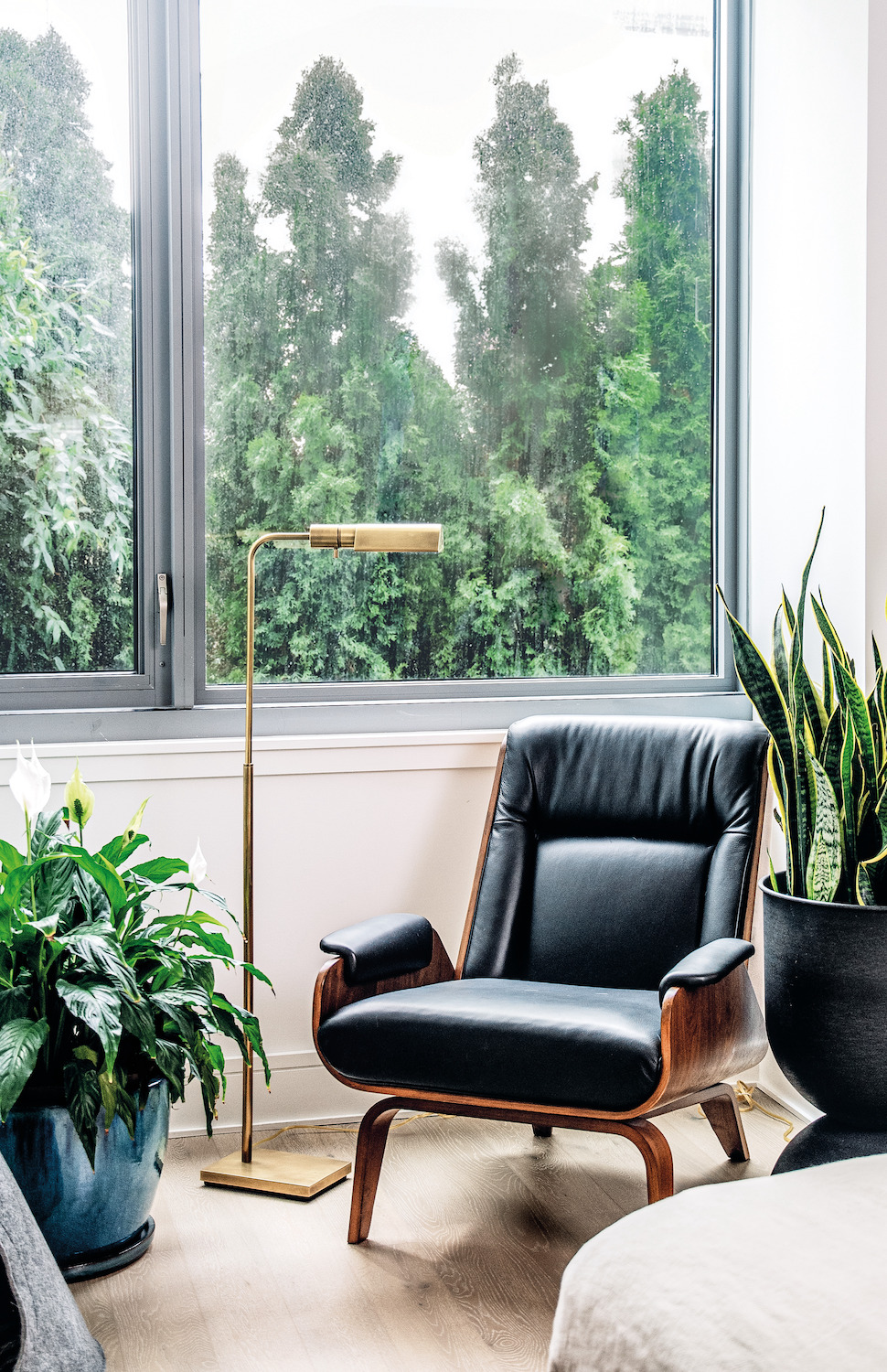
The Peace lily, with its shiny green leaves and delicate white flowers is one of the easiest plants to care for. It's one of the best plants that will clean the air and it will let you know if you forget to water it, as its leaves will droop and dull.
If it has wilted, it can be brought back to life pretty quickly too - even if its stems have totally collapsed due to neglect. Just give it some water and time, and within a week or so, it will be back to its resplendent self.
Those that do remember to water a Peace lily regularly and give its leaves a dust, will be rewarded with beautiful blooms. Although, it looks good with or without flowers.
'The Peace Lily is one of the most popular indoor houseplants, as it's so easy to care for and thrives in typical household environments,' says Matt at Lively Root. 'This dramatic plant will droop if neglected for a bit, but once you water it again, it will perk right back up as if nothing happened.
'A good rule of thumb is when the top inch of soil dries out, it’s time for another watering. The Peace Lily likes medium to bright indirect light while indoors. Try to keep them away from direct sunlight, as they’re shade-loving plants in the wild.
'Trim off any flowers that are past their prime, this will promote new flower growth and keep the leaves healthy and happy.'
6. ZZ plant (Zamioculcas zamiifolia)

The ZZ Plant is another excellent plant for time-pressed people. With its glossy, dark green leaves and ability to tolerate various conditions, it's almost indestructible. It takes extremely little effort from its owner for a ZZ plant to maintain a healthy appearance.
'One of the main reasons the ZZ plant is low-maintenance is its resilience to irregular watering and low light,' says Nick at Leaf & Clay. 'In fact, ZZ Plants can survive with fluorescent lighting alone, making them perfect for office spaces or basements'. This is why we included it in our list of the best desk plants - take one to work, it'll thrive!
'To care for a ZZ Plant, water it sparingly, allowing the soil to dry out completely between waterings, and place it in an area with low to bright indirect light,' Nick adds.
'This plant is characterized by its waxy green leaves above the surface of its potting mix, and its large potato-like rhizomes underneath,' says Paris at The Sill. 'These rhizomes store water, making the ZZ a drought-tolerant plant that can go weeks without water which is why we love it so much.'
'The ZZ plant often goes dormant (while staying green) over the winter and should only be watered once every 4-6 weeks or once the soil is fully dry,' says Lindsay, at Bloomscape. 'This is the perfect option for the busy or forgetful plant owner because it is essentially hands-off.'
7. Philodendron heartleaf

The Philodendron Heartleaf is a fast-growing, low-maintenance, vining plant. Named for its glossy, heart-shaped leaves, this plant is super easy to care for and very forgiving.
Any first time plant parent will derive huge satisfaction with a Philodendron, as it will thrive without much attention.
'The Philodendron Heartleaf will tolerate all kinds of neglect including low light, poor soil, and inconsistent watering,' says Lindsay at Bloomscape. 'This is a great plant for a desk, a shelf, or in a plant hanger where its vines can ‘spill’ out.'
'If you notice that the leaves are curling on your Philodendron Heartleaf, it probably is a sign of dry soil. But only water your Philodendron when around 75% of the soil volume is dry.
'If you accidentally let your Philodendron’s soil dry out completely, you may see leaves go limp, droop, and possibly start to brown and curl. If the soil is extremely dry all the way through the pot, a thorough soak is in order.'
8. Pothos (Devil's ivy)
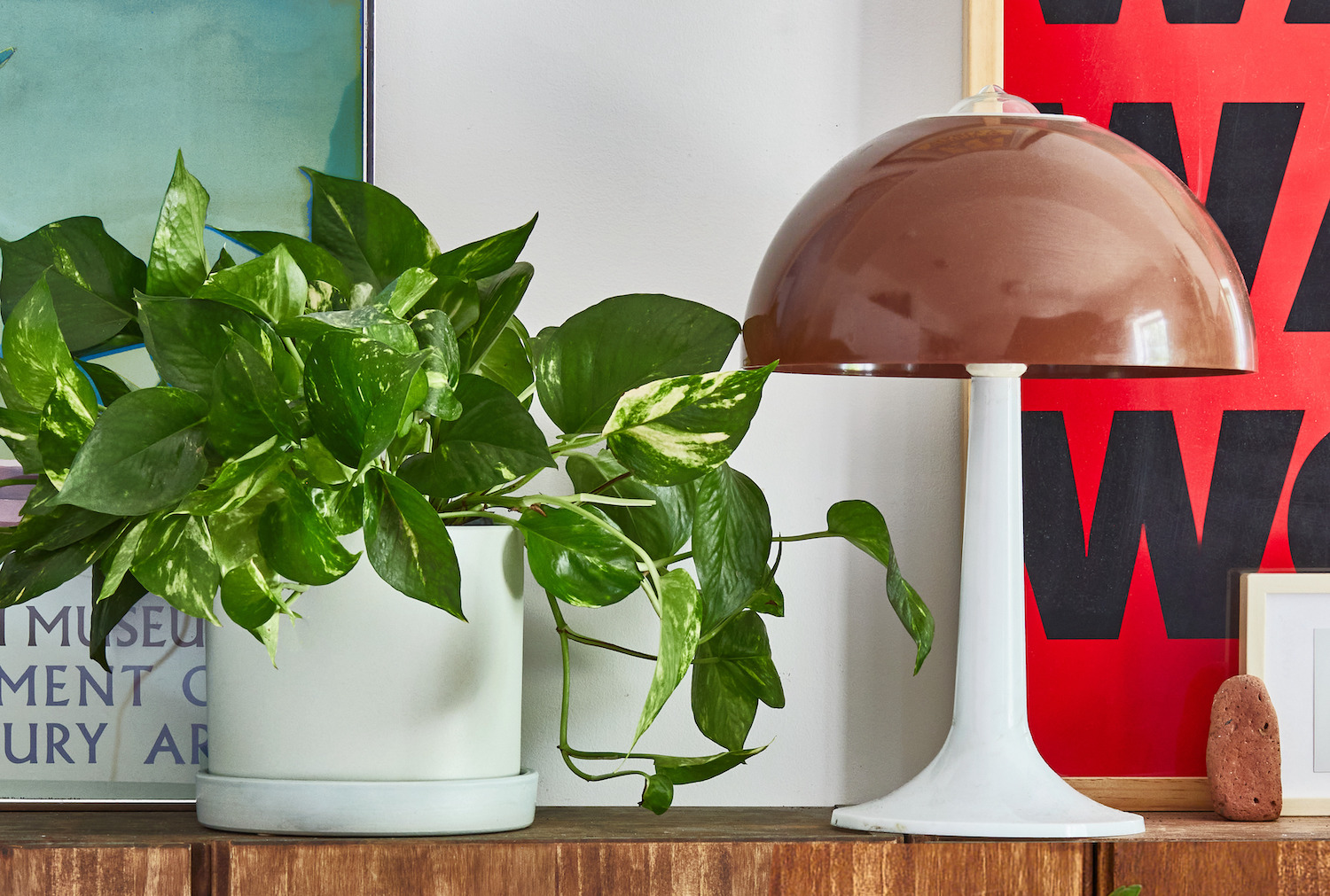
Pothos, also known as Devil's Ivy, is another versatile plant with attractive, heart-shaped leaves that trail (or climb) gracefully from its pot. It's believed its nickname, Devil's ivy has derived because it's virtually impossible to kill, so this is an easy-going houseplant. Just make sure its trailing leaves can't be clasped by curious pets, as it's toxic to them.
'Pothos can adapt to different lighting conditions and is drought-tolerant, making it an excellent choice for busy individuals or beginners,' says Nick at Leaf & Clay. 'Another appealing aspect of Pothos is its ability to purify the air.
'These plants require minimal care and can thrive in less-than-ideal conditions. To maintain a Pothos plant, water it when the top inch of soil feels dry, and place it in an area with low to bright indirect light.'
'Their low-maintenance nature, combined with their attractive appearance and air-purifying abilities, make them valuable additions to any indoor space. By providing simple care like occasional watering and situating them in areas with varying light conditions, these plants will reward you with their beauty and resilience.'
9. Succulents

If you're new to indoor gardening, succulents are a great place to start. Mostly from desert or semi-desert areas, these resilient plants can thrive in almost any setting and are able to survive for long periods of time with little water or care.
'The most important factor when it comes to how to care for succulents is temperature,' says Matt at Lively Root. 'They need full sun and very little water and will thrive at room temperature.
'Make sure to wait for the soil to dry out almost completely in between waterings, again erring on the side of the drier to not over water. Placing succulents near south-facing windows can maximize the full sun they receive.
'Succulents require a little more pruning than cacti. So remove any damaged or dead parts and keep an eye out for any unwanted pests.
'When growing succulents in containers, it can be fun to experiment with succulent varieties with different growth habits. For example, one of my favorites is Burro's Tail (Sedum morganianum), which has a trailing growth habit. This means that it will hang down from the edges of the pot and create a beautiful display of color around the pot.
'Another one of my favorites is Sticks on Fire (Euphorbia tirucalli), which has an upright growth habit. It'll grow up and out, creating a nice little vertical accent piece in your container garden.'
10. Cacti

A list of low maintenance plants would not be complete without Cacti. These desert-dwellers obviously require very little water, so can be left to their own devices for much of the time. There is also a huge amount of choice when it comes to shapes and shades, so a group of cacti will make an interesting display. They're also brilliant if you want to create an indoor garden on just one window sill.
'Cacti are some of my favorite plants because of their almost alien-like looks and the fact that they require so little attention,' says Matt at Lively Root. 'This makes them perfect for beginner indoor gardeners.
'Cacti require full sun, very little watering, and a steady temperature that never gets too cold. Place your cacti near a south-facing window to receive the most sunlight they can get.
'Make sure to allow the soil to almost dry out completely between waterings. If in doubt, wait even longer before watering. Cacti are slow growers and require little to no maintenance, but you can remove any dead or damaged parts if needed.
'Some of my favorite cacti are the Bunny Ear Cactus (Opuntia microdasys) and Golden Barrel Cactus (Echinocactus spp.). When it comes to styling cacti, the possibilities are endless. There are so many different shapes and textures you can find. I like having one large centerpiece that grows vertically and a bunch of smaller profile ones surrounding it.'







